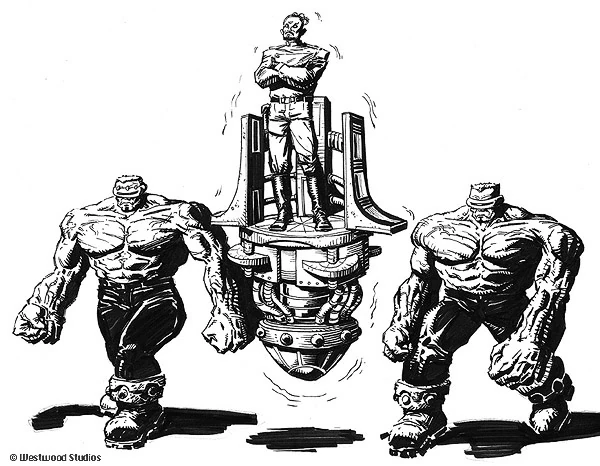All of these guns had a swiss watch mechanism. The LMG mechanism was basically the same as the normal gun... but with the addition of a triple revolving firing chamber. Why? Because the caseless ammo had a cook off limit of only 210 rounds and a very long cool down, and adding a bigger barrel to duct away heat (the normal LMG solution to this) wouldn't help due to the rotary action being a completely different disconnected piece of metal, so they needed more chambers to keep it viable. But this mechanism was never actually built.
Both versions would have been vulnerable to catastrophic jams from the caseless ammo breaking up in the action as occurred in US Army trials, and no doubt, occurred in German trials, records of which never seem to have been released. Probably because they'd just show people were ignoring problems.
Nothing could solve this with the ammunition concept the Germans were using. The G11 ammo required that the booster above the primer (something a normal cartridge have at all) shatter the propellant block to allow a uniform burn. This also launched the bullet into the barrel ahead of the main burn to improve the sealing problem all caseless ammo has.
If the booster shattered the block but didn't ignite it the gun would jam in a manner that the user could not clear. You had to strip down and rebuild the gun to get all the debris out and ram the bullet out of the bore. If the sealing went wrong, which from time to time it did, the gun itself would be wrecked by a gas jet burning off part of the breech.
Since many failure modes resulted from damage to the ammunition before loading, the German idea that the user would carry most of his ammo in plastic stripper clips and reload just three magazines in the field was especially dubious.
The basic erognomics of loading a magazine into and firing the G11 were fine, but about everything else was a bad idea.
With hindsight, it was an even worse idea because we know now people would have quickly introduced body armor that totally negated the G11 in the 1990s, even with the 3 round burst function, and at that point the tiny bullet would have left it with basically no path forward. Ceramic body armor works by eroding the projectile, and a tiny projectile is just way easier to erode then a bigger longer one. The G11 was predicated on penetrating body armor based on a titanium or steel plate which stopped the projectile in a different plastic manner.
More velocity won't make up for the short penetrator length, even if you could somehow squeeze more velocity out of the cartridge.
But you wouldn't be able to do that without an even smaller bullet because the projectile is already solid. You can't pack more powder into a solid form factor.... and the propellant was already based on HMX high explosive! So you increase the amount of HMX in that propellant and real quickly it goes from being a high cookoff temperature propellant into being a high explosive that simply shatters the entire action and kills the user.
Reality is the Germans took a long twisted path to reach the G11, and seem to have been pretty desperate to adapting anything at the point the Cold War ended and abruptly solved the problem. The G3 was not an appealing weapon to carry into the 1990s. The British adapted the terrible L85 in a similar situation, the old SLRs they had were reaching the physically worn out point, beyond it really, and it became no longer a choice about building new rifles.
 ). There was also a project (I forget the number) where they put a 152 mm main gun turret on the T-80 chassis, but it was decided in the end that while feasible, it's not worth the effort.
). There was also a project (I forget the number) where they put a 152 mm main gun turret on the T-80 chassis, but it was decided in the end that while feasible, it's not worth the effort.









